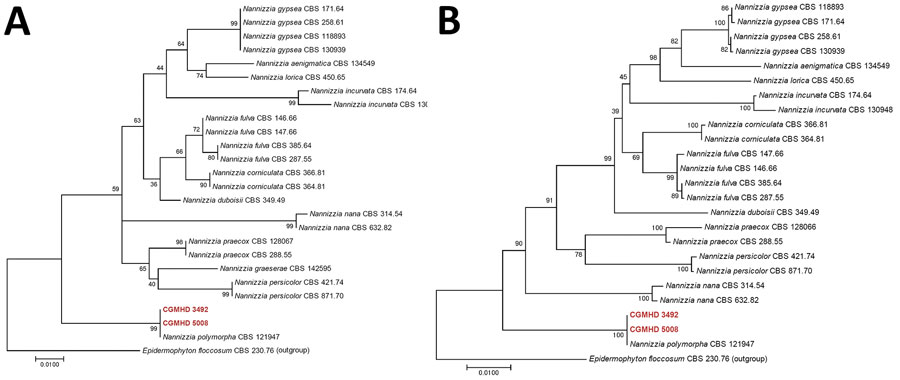Volume 29, Number 7—July 2023
Dispatch
Nannizzia polymorpha as Rare Cause of Skin Dermatophytosis
Figure 2

Figure 2. Phylogenetic trees of Nannizzia polymorpha in 2 patients with rare cases of skin dermatophytosis caused by this fungus. Trees were constructed by using MEGA 7.0 software (https://www.megasoftware.net) and the maximum-likelihood method on the basis of the internal transcribed spacer region (A) and combined datasets of internal transcribed spacer region, large subunit of ribosomal DNA, partial β-tubulin gene, translation elongation factor 3, and 60S ribosomal protein L10 (B). Red indicate strains isolated in this study. Tamura-Nei was used as a substitution model in both analyses. Numbers at nodes are bootstrap values. Scale bars indicate nucleotide substitutions per site.
Page created: May 24, 2023
Page updated: June 22, 2023
Page reviewed: June 22, 2023
The conclusions, findings, and opinions expressed by authors contributing to this journal do not necessarily reflect the official position of the U.S. Department of Health and Human Services, the Public Health Service, the Centers for Disease Control and Prevention, or the authors' affiliated institutions. Use of trade names is for identification only and does not imply endorsement by any of the groups named above.